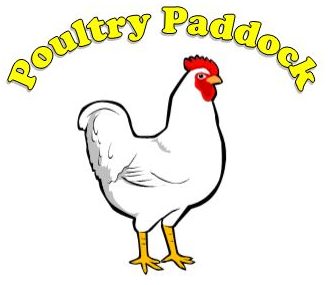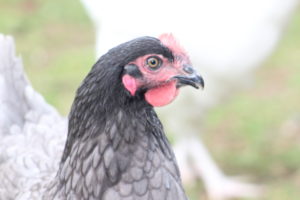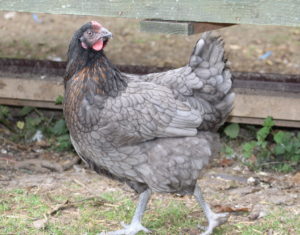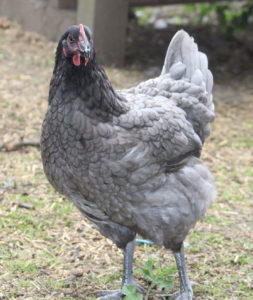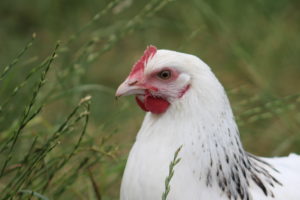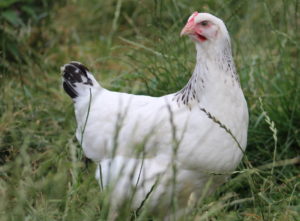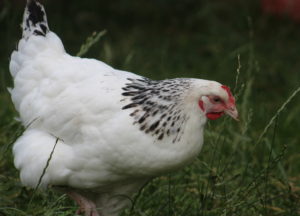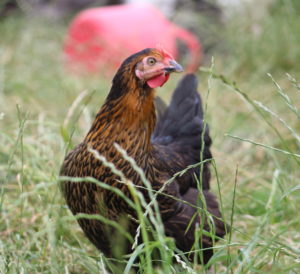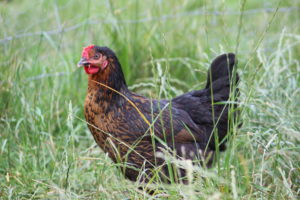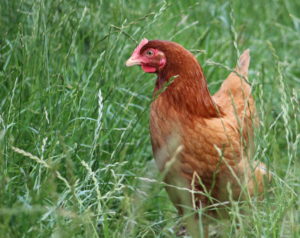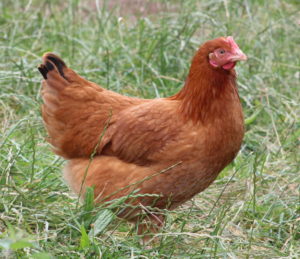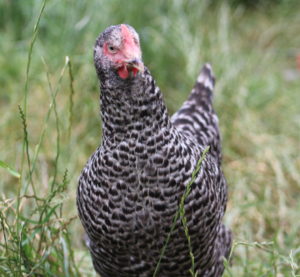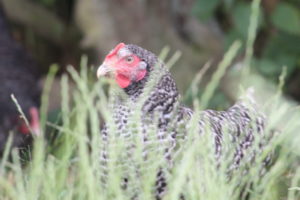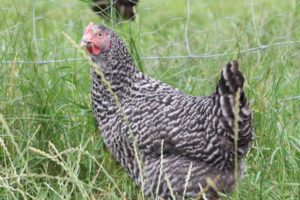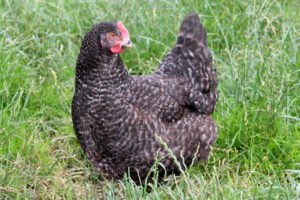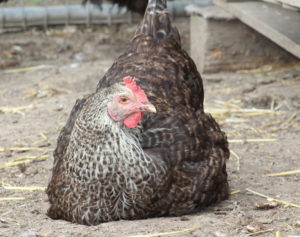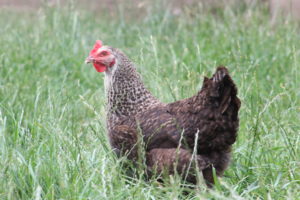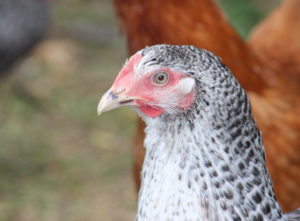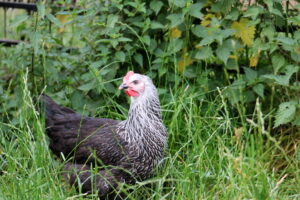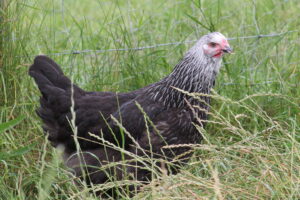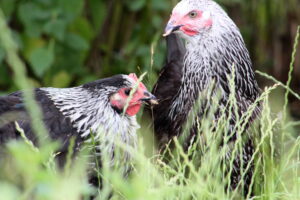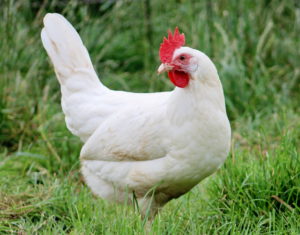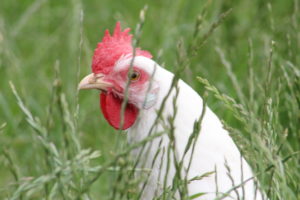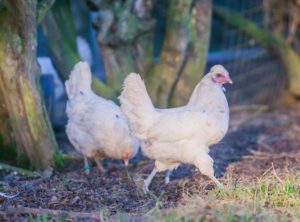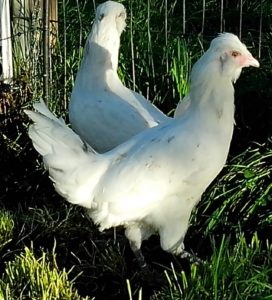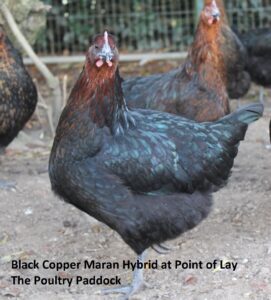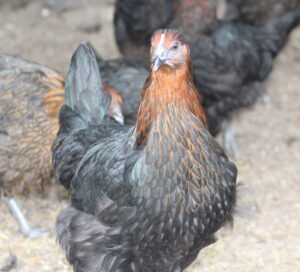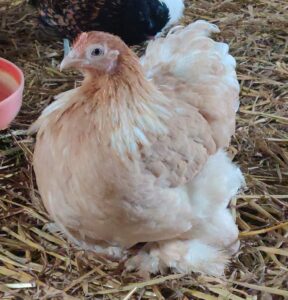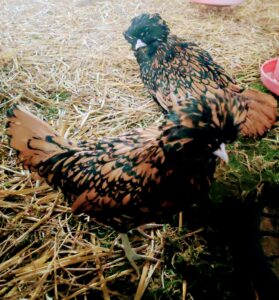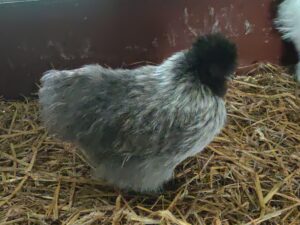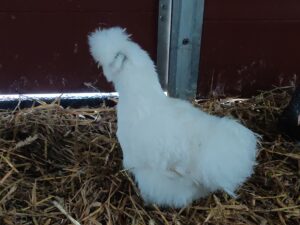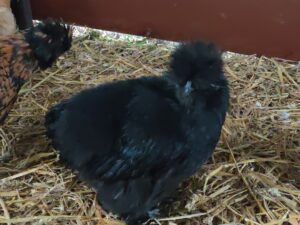2024 Catalogue of Laying Hens- Standard Hybrids
We open for Poultry Sales by appointment Monday to Saturday (closed Sundays). You can call us on 0782 118 7160. Please bring something to transport your birds home in (cardboard boxes, pet carriers, poultry crates are all good), alternatively you can purchase pet carrier boxes for £2.50 each. These will hold up to 3 hens.
The recommended minimum of birds if you are establishing a new flock is 3. If you are adding to a flock we recommend a minimum of 2.
Note we only supply birds that have been professionally bred and reared by established farms and hatcheries that we have worked with for a number of years. We do not obtain stock from livestock markets or from backyard breeders.
Birds are for collection only we are unable to provide national delivery.
Bluebell
Bluebells are our best selling hens. They are a cross of various Marans Coucou and Rhode Island Red strains. They are beautiful slate coloured birds with a darker head. They are the largest of our regular hybrids, typically reaching over 2.6kg but they are quiet and docile. They lay large brown eggs.
Light Sussex
The Sussex is a classic English breed that can trace its origins as far back as the Roman times. They were hugely popular as a utility breed throughout the 20th century, particularly for small enterprises. Many of our older customers have fond memories of keeping Light Sussex hens in their backyards to keep them in eggs and meat through the days of rationing. Light Sussex Hens (hybrids) – The traditional farmyard classic, the Light Sussex Hybrids from the Poultry Paddock are derived by crossing Light Sussex chickens with selected Rhode Islands. It’s done is such a way that the traditional Light Sussex appearance is retained. This also improves the egg laying capability, reduces broodiness and provides some hybrid vigour. They have predominately white plumage with black feathering on the neck (the hackle feathers), tail and wingtips. They are ready the start laying at about 21 weeks old. They lay a good sized light brown egg and in well managed conditions they can lay up to 250 eggs in the first year. They are one of the heavier hybrid breeds, as you would expect considering their utility origins. A mature bird will weigh around 2.7kg. The Light Sussex is one of the most popular birds that we sell. Our customers often say that they like it’s striking appearance with distinctive plumage and it’s good size.
Black Rock – The Tough Free Ranger
The Black Rock Hen, sometimes also know as a Rhode Rock, Bovans Nera or Black Star, is a hybrid bred from selected laying strains of the Rhode Island Red (cock) and the Barred Plymouth Rock (hen). They are predominately black with varying amounts of chestnut feathering on their necks and chest. This feature makes it quite easy to tell them apart (useful if you like to name your hens). The black feathering on the birds also has a green pearlescent luster. They are a black sex linked breed, so they hens can easily be distinguished from the cocks as soon as they hatch. It’s thick feathering makes it ideal for harsher free range conditions as well as
garden environments. Our breeder has been selecting and improving the parent stock for these birds for over 40 years. They start to lay eggs at about 21 weeks of age and they lay a large brown egg (average 65 grams at 72 weeks old). They are one of the best laying hybrids particularly in harsher free range conditions. In good carefully managed conditions they can lay up to 300 eggs per year. Compared to other hybrids they are a medium weight bird typically reaching about 2.2kg by 72 weeks.
We keep Black Rocks for eggs ourselves at the Poultry Paddock. We are delighted with their performance. Our birds spend nearly all of their time outdoors, in all conditions. Our Black Rocks have proven themselves as the best layers in these conditions. They supply us with a good number of eggs with excellent shell quality for a few seasons.
Columbian Blacktail – The Rangers
Columbian Blacktails are a hybrid derived from the Rhode Island Red (cock) and Light Sussex (hen) breeds. This is probably the most popular cross for small scale amateur breeders because both Rhode Island Reds and Light Sussex pure breed hens are common breeds, and because the resulting chicks are sex linked. This means that the sex of the chick can be identified as soon as they hatch. The cocks will be yellow and the hens brown. Small scale breeders will often use pure breed utility stock to produce their blacktails, but hens from the Poultry Paddock are derived from carefully selected parent stock to ensure the resulting hen has all the qualities required for less intensive free range systems and as garden birds. They will be good layers, less inclined to go broody and lay quality eggs for a good few years. They lay a large light brown egg. The Columbian Blacktail are becoming a popular choice for commercial egg producers because it has proven itself to be
a better performer than the “battery” type commercial hens when used in the less intensive free range and organic laying systems that are now demanded by
more discerning consumers. The Waitrose supermarket uses Blacktails for it’s premium brand of free range eggs and it makes a big deal of this in its promotional
material (read more here: http://www.waitrose.com/home/inspiration/ about_waitrose/about_our_food/eggs.html) Blacktails are also know as Columbian
Blacktails (The Columbian reference comes from the darker feathering that they sometimes have around their necks). They are also sold as British Blacktails,
Gingernut Rangers, Red Rangers or Calder Rangers. Some of our customers insist on calling them Ginger Whingers, but only because it rhymes, they don’t complain any more than other hens. Blacktails lay a brown medium to large egg (63 grams average) and they start to lay at around 21 weeks old. In carefully managed conditions they can lay 280 – 300 eggs per year. Compared to other Hybrids they are a medium weight bird typically reaching about 2.2kg by 72 weeks.
Barred Rock – The hen with striped feathers.
The Barred Rock is a hybrid derived by crossing a Barred Plymouth Rock (cock) and a Rhode Island Red (hen). It gets the bars (attractive black & grey stripes) in its feathers from the Barred Plymouth Rock which gives it a very attractive plumage. It’s a reverse cross of the Black Rock and like the Black Rock it is a reliable and tough bird. Barred Rocks start to lay at about 21 weeks and lay a brown egg. In perfect conditions they can lay up to 290 eggs in the first year of laying. Compared to
other hybrids it is a medium weight bird that typically reaches 2.2kg at 80 weeks.
Speckledy – Speckled eggs from speckledy chickens!
Our Speckledys are hybrids derived by crossing carefully selected Marans Coucou with Rhode Island Reds. Their plumage, inherited from the Marans is predominantly grey with white flecks (known as cuckoo feathering). They have heavier white flecking around the head, neck and chest. Occasionally they will also have feathering on their feet. They have a docile temperament. The Speckledy is one of the heavier hybrids with adult birds reaching around 2.5kg.
They lay deep brown eggs with strong shells, and many will lay speckled eggs. This is a feature that they inherit from their Maran parents. They start laying at around 21 weeks and when housed in well managed conditions they can lay up to 260 eggs in their first laying year. Crossing a pure breed Marans with a Rhode Island Red in this way produces a hen that takes it’s appearance and egg qualities from the Maran, but introduces hybrid “vigour” and increases the rate that eggs are laid.
Magpies (Also Know as Silver Sussex or Medicis)
The Magpies or Silver Sussex or Medicis as they are also known have predominately jet black plumage with silver feathering to the head and neck. They are a similar size and similar laying capability to the Light Sussex.
White Star – The Little Ballerina -White Leghorns
White Star hens from the Poultry Paddock are a hybrid derived by crossing different strains of White Leghorns. In terms of egg numbers it’s the best layer of all the hens we sell and unlike the other hybrids it lays a white egg. These are small initally but as the bird gets older the egg grow in size until it becomes a reliable layer of large (or even very large eggs) with strong shells. It’s also a relatively small chicken. A typical adult will weigh in the region of 1.7 to 1.9kg. This makes it very economical to keep, they will only eat about 115g of feed per day. With such a good feed conversion ratio, the White Leghorn is popular with farmers and commercial egg producers all over the world, except the UK anyway. In the UK consumer choice in supermarkets is limited to brown eggs only. It hasn’t always been that way, white eggs were available in British shops back in the day, but when brown bread was first promoted as healthier than white bread a small minority of consumers eronously believed that the same applied to eggs. White egg sales took a small dip, but this was enough for the UK commercial egg producers to shut down white egg production completely and to adopt brown eggs from brown chickens as standard in the UK – unbelieveable eh?
The nutritional value of white eggs is the same as that of brown, and a mix of different coloured eggs on the egg rack looks great. White Stars have a totally white plumage and as they mature they grow a large red comb over the top of their heads. The temperament of White Stars is different to that of the Rhode Island Red based hybrids, they’re often happy with their own company, and they are quite timid and flighty. This means that they a quite good flyers and fast across the ground. If you have a White Star in your flock you will find that is always the one that settles up a tree or on the roof, and it is the one that is most difficult to catch. Because of this they don’t suit everyone and first time chicken keepers should give some thought to clipping their wings (we can do this for free when you buy your hens).
If you want a hen that’s a little different than the run of the mill, then a graceful White Star could be for you.
Brown Commercials
Also known as Red Star chickens, these are commercial birds as used for supermarkets and shops for industrialised egg production. They lay a large number of eggs, particularly over the first year.
2024 Special Hybrid Laying Hens- Specials
French Blues
These chickens lay a sky-blue shelled egg and they lay up to 280 medium-large eggs per year, this is significantly more than other Blue egg layers such as the Cream Legbar or the pure bred Araucana. We have also found them to be more reliable blue egg layers than any of the other blue egg hybrids that are available. The bird is predominantly white with a crest, they rarely go broody and they have a flighty nature similar to the White Star hens.
The blue eggs look great on the helter-skelter! especially when mixed with brown & white eggs and they are always a good talking point at the dinner table.
The French Blue hens supplied by the Poultry Paddock are Marek Vaccinated and fed on medicated feed with an anti-coccidiostat.
Copper Black Marans
These are a hybrid version of the Copper Black Marans, they have been bred to be good layers of darker brown eggs. There Plumage is predominately black with brown feathering to the neck and chest. They are similar in appearance to the Black Rock hens but with darker legs and a redder colour to the brown feathering.
Bantams & other Fancy Fowl
Pekin Bantams
Polish Bantams
Silkies
